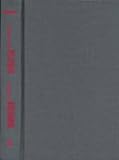Picturing Knowledge : Historical and Philosophical Problems Concerning the Use of Art in Science / ed. by Brian Baigrie.
Material type: TextSeries: Toronto Studies in PhilosophyPublisher: Toronto : University of Toronto Press, [1996]Copyright date: ©1996Description: 1 online resource (414 p.) : 118 b&w illustrationsContent type:
TextSeries: Toronto Studies in PhilosophyPublisher: Toronto : University of Toronto Press, [1996]Copyright date: ©1996Description: 1 online resource (414 p.) : 118 b&w illustrationsContent type: - 9780802029850
- 9781442678477
- 502.2/2
- Q222 .P53 1996eb
- online - DeGruyter
| Item type | Current library | Call number | URL | Status | Notes | Barcode | |
|---|---|---|---|---|---|---|---|
 eBook
eBook
|
Biblioteca "Angelicum" Pont. Univ. S.Tommaso d'Aquino Nuvola online | online - DeGruyter (Browse shelf(Opens below)) | Online access | Not for loan (Accesso limitato) | Accesso per gli utenti autorizzati / Access for authorized users | (dgr)9781442678477 |
restricted access online access with authorization star
http://purl.org/coar/access_right/c_16ec
The traditional concept of scientific knowledge places a premium on thinking, not visualizing. Scientific illustrations are still generally regarded as devices that serve as heuristic aids when reasoning breaks down. When scientific illustration is not used in this disparaging sense as a linguistic aid, it is most often employed as a metaphor with no special visual content. What distinguishes pictorial devices as resources for doing science, and the special problems that are raised by the mere presence of visual elements in scientific treatises, tends to be overlooked.The contributors to this volume examine the historical and philosophical issues concerning the role that scientific illustration plays in the creation of scientific knowledge. They regard both text and picture as resources that scientists employ in their practical activities, their value as scientific resources deriving from their ability to convey information.
Mode of access: Internet via World Wide Web.
In English.
Description based on online resource; title from PDF title page (publisher's Web site, viewed 01. Nov 2023)


